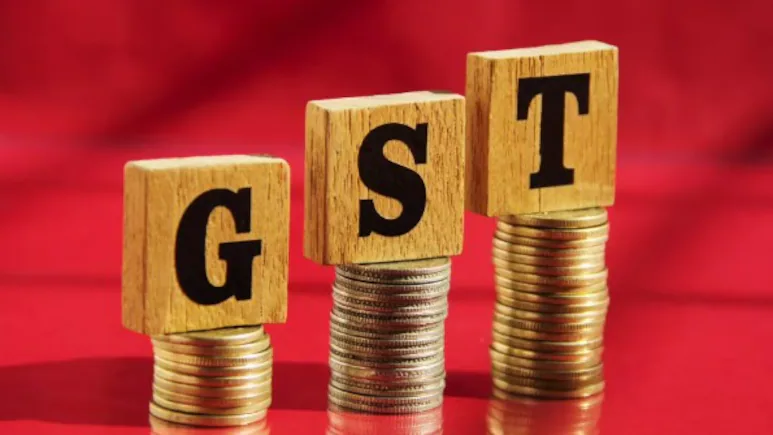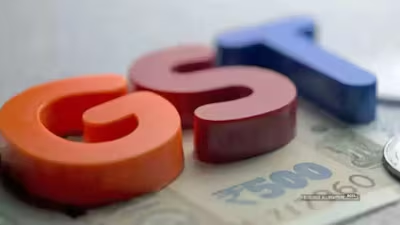As per the sources, the Centre has suggested that only two Goods and Services Tax (GST) should be retained and they are 5 per cent and 18 per cent slab.
The sources said under this proposal, 90 per cent of the items in the 28 per cent will be shifted to 18 per cent slab and 99 per cent items in the 12 per cent slab to five per cent slab.
Luxury and sin goods (tobacco, gutkha and cigarettes) will attract a special rate of 40 per cent. The government sources indicate that the 40 per cent category will comprise only 5-7 items but will not include items such as aspirational products like refrigerator, air conditioner and washing machine. Moreover, in overhauled indirect tax structure petroleum products will still not form a part of the GST regime.
Such labour intensive and competitive export oriented industries e.g. diamonds and precious stones would still be taxed as per the current rates.
The overall level of taxation will stay at its present amount of 88 per cent. As sources stated, the GST revamp proposed will lead to a massive boost in consumption thus countering the loss in revenue because of rate rationalisation.

The proposal rested on the basis of the Union Finance Ministry data that showed that 67 per cent of the total GST revenue is made-up of products in the 18 per cent Slab, 11, five and seven per cent make up of products in the 28 per cent, 12 per cent and five per cent Slab respectively.
The plan to revamp GST is hours after Prime Minister Narendra Modi was speaking on the Independence Day where he promised that GST reforms will be ushered in as part of the two Diwalis. Next generation reforms areas have been identified as the rationalisation of tax rates as it helps the common man, women, students, the middle class, and farmers.
This was in addition to other major announcements including a national deep water exploration mission to achieve self-reliance in energy and an indigenous indigenous Sudarshan Chakra defence system by 2035.
States need to seek the approval of finance ministers on the proposal most likely in September or October by the GST Council.
Economist and GST expert, Ved Jain had told that in case this proposal is pursued, the GST rate on most of the common use items will fall reducing their prices. This will directly provide benefits to the common people as well as the middle class, the farmers, and women.
It was announced at a time when GST celebrates its eighth anniversary and has turned out to be one of the greatest post-independence tax reforms in India. GST has since its introduction in 2017 rationally consolidated the indirect tax system in the country and has provided immense ease of doing business particularly among the small and medium enterprises.
Through a statement released following the Independence day speech by Prime Minister Narendra Modi in which he said that GST reforms that are going to reduce the tax burden considerably and make unorganised industries relatively more organised will be implemented by the Diwali, the ministry said that the central government has submitted its proposal on GST rate rationalisation and reforms namely relating to its structural reforms, rate rationalisation and ease of living to the Group of Ministers (GoM) constituted by the GST Council to review this matter.
According to it, the proposal presented by the Centre to the GoM is based on three pillars namely the structural reforms, rate rationalisation and ease of living. The proposal involves cutting of the taxes on items of common man and aspirational products.
It said that the GST Council in its next meeting, date of which has not been announced, would discuss the GoM recommendations and would aim to operationalise the bulk of the reforms during this financial year.
The proposal of GoM, the GST rate rationalisation plan, is supposed to be discussed in the GST Council composed of thestate ministers and chaired by Finance minister Nirmala Sitharaman, this month during the meeting.
GST currently encompasses a four bracket tax system of 5, 12, 18, and 28 per cent with basic goods being exempted or put in the lower tax bracket and demerit and luxury goods are taxed at top bracket. In addition, compensation cess of different rates is imposed on demerit products and luxuries such as pan masala and automobiles.
Stimulus to production and economy

In his speech on the Independence Day, Prime Minister Narendra Modi had declared the launch of next-generation GST reforms by this Diwali in order to lower taxes on the items consumed daily in India. Over the next few weeks, the Centre shall deliberate with states on the proposals in an attempt to create a consensus around these.
The official source termed the plan as shifting away of the inherited and legacy logic of GST to a new regime of GST that would be friendly to the common man with the low rate of taxes and towards boosting the economy and revive sectors like agriculture, textiles, fertilisers, renewable energy, automotives, handicrafts, health and insurance, by giving lower rates of taxes, removing GST classification issues and giving a right at the inverted duty structure.
These proposals do not require any legislative amendments in GST Act and therefore, in case it is agreed upon by GST Council, could be effected via notifications.
As per sources since there is a vastness of the proposals, several meetings of the GST Council would also be summoned to debate and ratify them in the next few months.
Quicker refunds, registration and pre-loaded tax returns in GST
Besides the tax reforms, the Centre also has suggested structural changes in GST, such as correction in the inverted duty structure, which would benefit in particular, the textiles and fertilisers sector. The government has also floated an idea of simplification of rate structures by putting similar goods under a common tax slab which will eliminate wrangles and litigation on such things like namkeens and savouries.
In the meantime, as a measure to ensure stability and predictability of the indirect taxation, it has advised smooth registrations using technology and quicker refunds as well as automated refunds to exporters and exporters with inverted duty structure. It has also proposed the introduction of a pre-filled returns to reduce invoice matching and reduce the rate at which people have to comply.
For more updates follow: Latest News on NEWZZY
